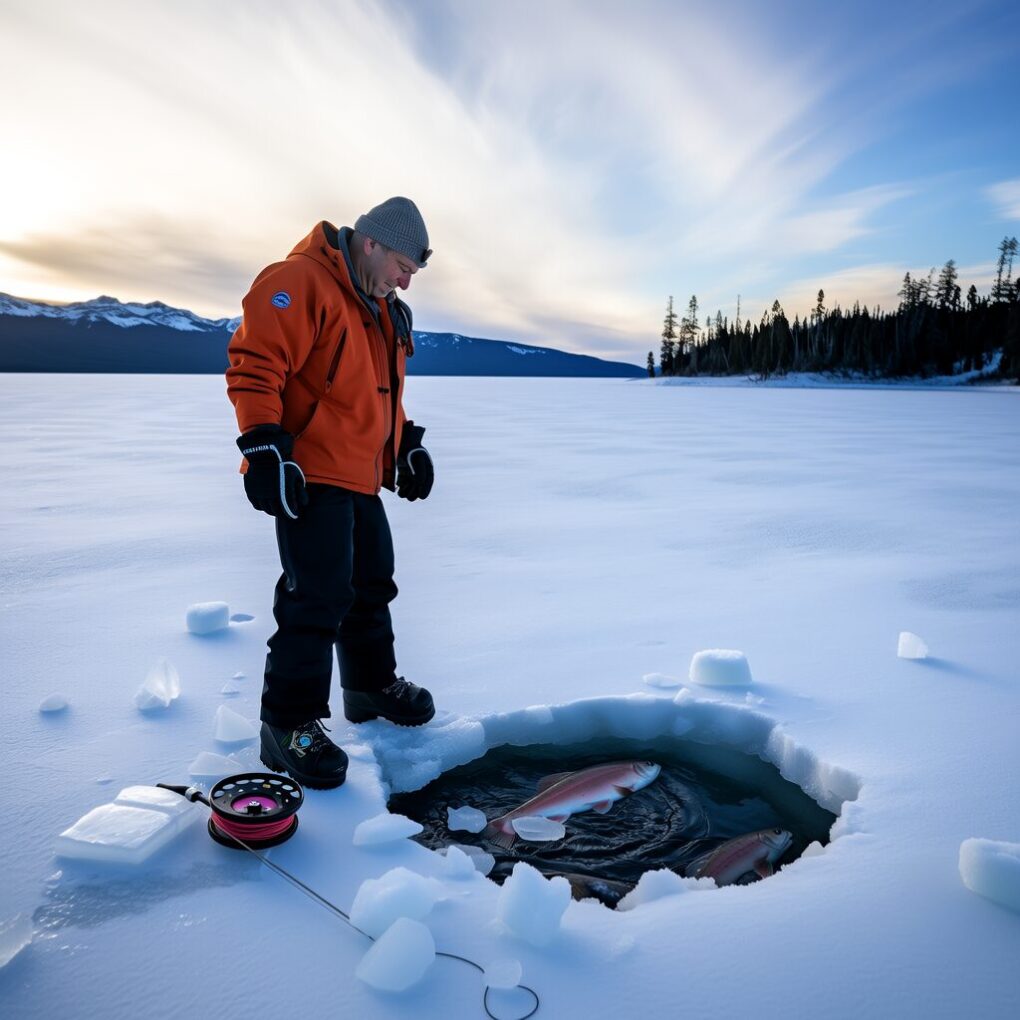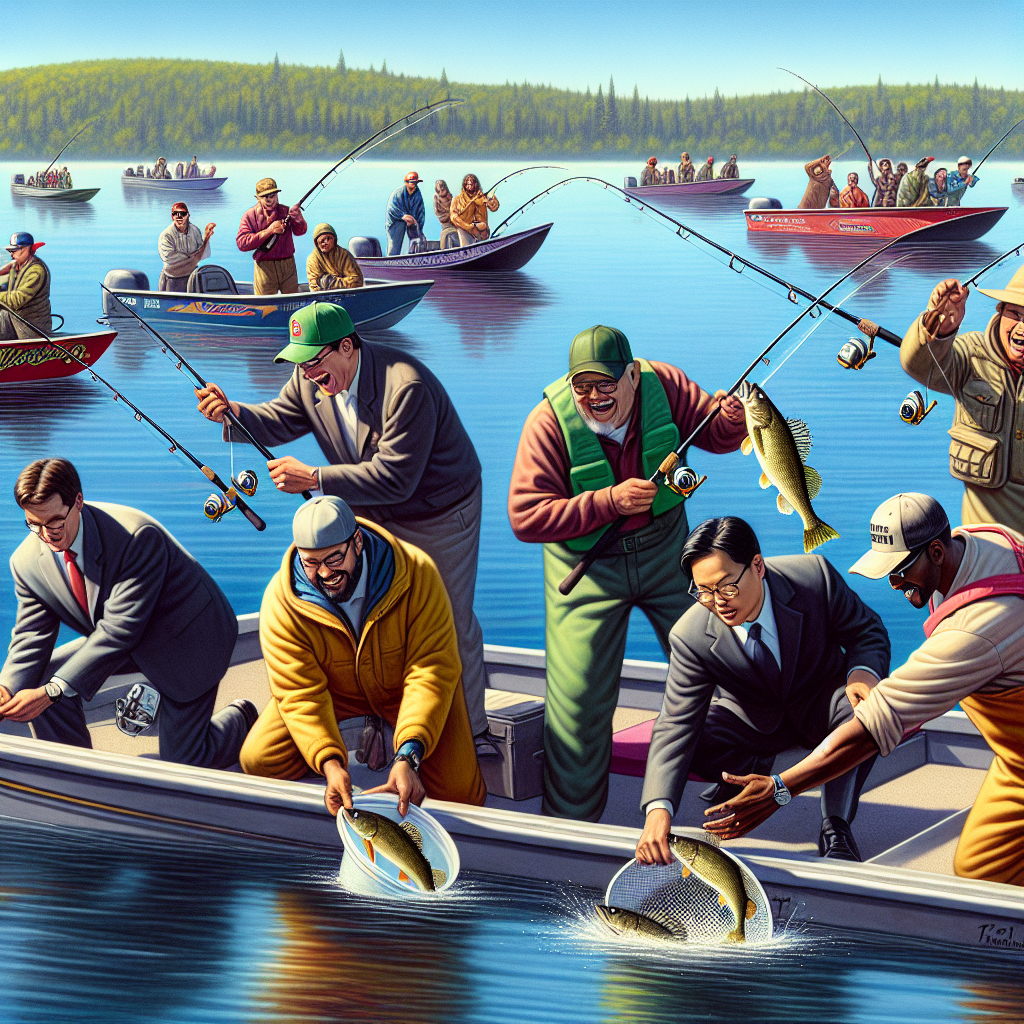https://www.youtube.com/watch?v=wYyRSBHqJ0M
Fishing Licence Canada: A Detailed Overview for Enthusiasts
For anyone interested in exploring the vast waters of Canada, obtaining a fishing licence Canada is an essential step. This document not only grants legal access to fish but also supports the conservation of aquatic ecosystems. In this comprehensive guide, we will delve into everything you need to know about fishing licences in Canada, from their types and costs to the application process and associated responsibilities.
Understanding the Importance of Fishing Licence Canada
Fishing licence Canada serves as a crucial tool in managing and preserving the country’s rich aquatic resources. By purchasing a licence, anglers contribute financially to conservation efforts, research, and habitat restoration. Moreover, it ensures that all fishing activities comply with local regulations, which are designed to maintain sustainable fish populations.
Types of Fishing Licences in Canada
There are several categories of fishing licences available across Canada, each tailored to different needs and preferences:
Resident Fishing Licences
Residents of Canada can apply for resident fishing licences, which typically come at a lower cost compared to non-resident options. These licences are valid for varying durations, such as one day, one week, or an entire year, depending on the province or territory.
For example, in Ontario, residents can purchase a Conservation Fishing Licence for $16.50, allowing them to catch a limited number of fish species. Alternatively, they may opt for a Sports Fishing Licence for $27.50, which permits more extensive fishing opportunities.
Non-Resident Fishing Licences
Tourists and visitors from outside Canada can acquire non-resident fishing licences. These licences generally carry higher fees to account for the additional demand placed on natural resources by non-residents. Non-residents must adhere to the same rules and restrictions as Canadian citizens when fishing.
In British Columbia, non-residents can obtain a one-day freshwater fishing licence for $19.74 or a seven-day licence for $49.74. These licences provide ample opportunity to explore the province’s pristine lakes and rivers.
Youth and Senior Licences
Special provisions exist for youth and senior citizens, offering discounted rates or even exemptions under certain circumstances. For instance, children under the age of 16 often do not require a fishing licence in many provinces, provided they are accompanied by a licensed adult.
Elderly individuals aged 65 and above may qualify for reduced-cost licences or complete exemptions, depending on provincial policies. It’s important to verify specific guidelines within your region of interest.
Steps to Obtain a Fishing Licence Canada
The process of acquiring a fishing licence Canada varies slightly between provinces and territories. However, the general steps remain consistent:
Step 1: Research Provincial Regulations
Begin by familiarizing yourself with the specific regulations governing fishing in the area where you plan to fish. Each province maintains its own set of rules regarding seasons, limits, and restricted areas.
Alberta, for example, enforces strict daily catch limits on trout species to protect vulnerable populations. Meanwhile, Quebec imposes seasonal closures on certain water bodies to allow fish stocks to recover.
Step 2: Determine Eligibility
Confirm whether you meet the eligibility criteria for the type of licence you wish to purchase. Factors such as residency status, age, and citizenship play significant roles in determining appropriate licence options.
If you’re a first-time applicant, some jurisdictions may require proof of identity or residency before issuing your licence. Keep relevant documentation handy during the application process.
Step 3: Choose Your Licence Type
Select the most suitable licence based on your intended fishing duration and goals. Whether you’re planning a quick weekend trip or an extended vacation, there’s a licence option designed to accommodate your needs.
Consider purchasing a multi-year licence if you frequently engage in recreational fishing. This choice could save money over time while simplifying the renewal process.
Step 4: Complete the Application
Most provinces offer both online and in-person methods for applying for a fishing licence Canada. Online applications tend to be faster and more convenient, especially for those who already possess the necessary information and payment details.
When filling out the form, ensure accuracy in providing personal data, such as your name, address, and contact information. Mistakes could delay processing or result in denial of your application.
Step 5: Pay the Required Fee
Fees associated with fishing licences vary widely according to factors like residency, age, and licence duration. Be prepared to pay via credit card, debit card, or other accepted methods when submitting your application.
Some regions accept cash payments at designated retail locations or government offices. Verify acceptable forms of payment beforehand to avoid complications.
Cost Considerations for Fishing Licence Canada
Understanding the financial aspects of obtaining a fishing licence Canada helps budget-conscious anglers make informed decisions:
Resident Fees
As mentioned earlier, resident fees represent the most affordable option for Canadian citizens and permanent residents. Prices range from a few dollars for short-term licences to approximately $30-$50 for annual permits, depending on the province.
Manitoba charges $25.50 for an annual resident freshwater fishing licence, making it an attractive deal for avid anglers looking to maximize their fishing opportunities throughout the year.
Non-Resident Fees
Non-residents should expect to pay significantly more for their fishing licences due to increased usage of resources. Fees might exceed $100 for longer-duration permits, although shorter-term options remain relatively accessible.
Saskatchewan offers a three-day non-resident fishing licence for $47.50, providing excellent value for tourists wishing to sample the province’s abundant fishing spots without committing to a larger investment.
Discounted Options
Look out for special promotions or discounts offered by various provinces to encourage participation in recreational fishing. These deals may include reduced rates during off-peak seasons or bundled packages combining multiple activities.
Newfoundland and Labrador occasionally runs campaigns offering free or discounted licences to new applicants or returning customers. Such initiatives aim to boost tourism and promote sustainable fishing practices simultaneously.
Regulations Governing Fishing Licence Canada
Once you’ve secured your fishing licence Canada, it’s vital to understand the accompanying regulations to ensure compliance and avoid penalties:
Catch Limits
Each province establishes maximum allowable catches for different fish species. Adhering to these limits prevents overfishing and preserves biodiversity. For example, Nova Scotia restricts anglers to five Atlantic salmon per season, emphasizing the importance of responsible fishing practices.
Failure to observe catch limits can lead to fines, confiscation of equipment, or even revocation of your fishing licence Canada. Always double-check current regulations before heading out on a fishing trip.
Size Restrictions
Minimum size requirements exist for numerous fish species to safeguard juvenile populations and encourage growth. Measure your catch carefully using a reliable measuring device, ensuring all retained fish meet or exceed specified dimensions.
In Prince Edward Island, brook trout must measure at least 15 centimeters in length to be legally kept. Discarding undersized fish promptly increases their chances of survival and contributes to long-term sustainability.
Restricted Areas
Certain waterways and zones prohibit fishing altogether or impose additional restrictions to protect sensitive habitats or endangered species. Respect signage indicating no-fishing areas and consult official maps or guides prior to casting your line.
Yukon Territory designates several spawning grounds as protected zones, banning all fishing activity within these boundaries. Violating such restrictions jeopardizes fragile ecosystems and undermines conservation objectives.
Conservation Efforts Supported by Fishing Licence Canada
Your purchase of a fishing licence Canada directly supports vital conservation programs aimed at protecting and enhancing aquatic environments:
Habitat Restoration Projects
Funds generated through licence sales fund critical habitat restoration projects, such as streambank stabilization, wetland creation, and riparian zone enhancement. These initiatives improve water quality, increase biodiversity, and create ideal conditions for fish reproduction and growth.
Nunavut invests heavily in restoring traditional fishing areas impacted by climate change and industrial development. By purchasing a fishing licence, you contribute to maintaining cultural heritage and ecological balance in northern regions.
Research and Monitoring Programs
Scientific research plays a pivotal role in understanding fish population dynamics and informing management strategies. Licence revenues finance studies examining migration patterns, reproductive cycles, and environmental impacts affecting fish health and abundance.
Ontario collaborates with academic institutions and independent researchers to track invasive species threats and develop effective mitigation measures. Supporting this work through your fishing licence purchase ensures continued progress toward sustainable fisheries.
Public Education Campaigns
Raising awareness about responsible fishing practices and environmental stewardship remains a priority for many provinces. Public education campaigns funded by licence proceeds educate anglers about best practices, ethical considerations, and the importance of conservation.
Quebec actively promotes Leave No Trace principles among its angling community, encouraging minimal impact fishing techniques and proper waste disposal. Through collective effort, these teachings foster respect for nature and enhance overall enjoyment of outdoor pursuits.
Conclusion: Embrace Responsible Fishing with a Fishing Licence Canada
Acquiring a fishing licence Canada represents more than just a legal requirement; it symbolizes commitment to preserving our precious aquatic resources for future generations. By following outlined procedures, respecting established regulations, and supporting ongoing conservation efforts, every angler contributes positively to the vitality of Canada’s waters.
Whether you’re a lifelong enthusiast or newcomer to the sport, obtaining a fishing licence Canada opens doors to countless adventures amidst breathtaking scenery. So gather your gear, secure your permit, and embark on unforgettable journeys exploring the nation’s remarkable fishing destinations!




